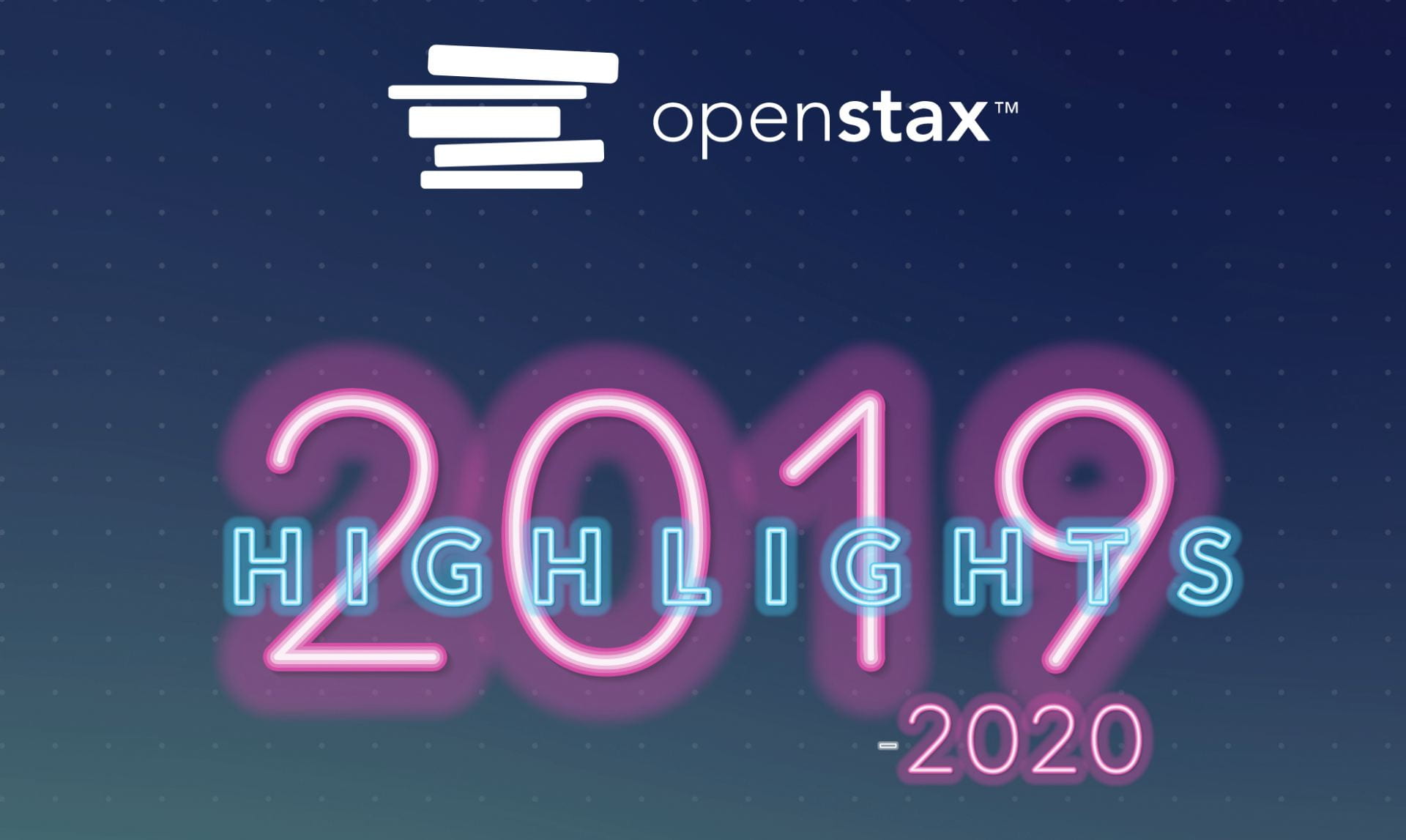NEWS RELEASE
David Ruth
david@rice.edu
Jeff Falk
713-348-6775
jfalk@rice.edu
HOUSTON – (Sept. 11, 2019) – Almost 3 million students are saving an estimated $233 million this year by using free textbooks from OpenStax, the Rice University-based publisher of open educational resources.
Since publishing its first free textbook online in 2012, OpenStax has expanded its library to provide books for over 36 college and Advanced Placement® courses. The organization’s work has not only saved 9 million students more than $830 million, it’s also credited with contributing to a disruption in the publishing industry that’s lowering overall textbook prices.
“Until a few years ago the college textbook bubble had seen sustained growth — textbook prices had risen 800% over 50 years,” said Mark Perry, a scholar at The American Enterprise Institute and professor of economics and finance at the University of Michigan. “In 2017, there was a market-wide drop in textbook prices, and I believe that free alternatives like OpenStax books are central to that disruption.”
The rapid growth and sustained popularity of OpenStax and similar resources has forced publishers to re-evaluate their pricing models, Perry said.
As a result, many textbook publishers are lowering prices by replacing expensive print textbooks with limited access, digital and print rental only books. While publishers are generally scaling back their offerings to students, OpenStax is expanding to serve more students.
Despite its growing reputation for providing free electronic textbooks, OpenStax is careful to avoid equating “digital” with “access.” So the organization provides low-cost print textbooks to anyone who prefers reading paper to reading a screen. The organization announced a partnership with Vretta, Inc. to bring its print textbooks to Canada earlier this year.
In 2019, more than 90% of student users will access free textbooks digitally either through a website view, downloadable PDF or the OpenStax + SE mobile app. The newly introduced app launched last month and amassed nearly 58,000 downloads across the App Store and Google Play.
“We are exceeding even our own expectations of growth and impact on a daily basis,” said Daniel Williamson, managing director of OpenStax. “This tells us that people believe in what we’ve created and that we need to keep going.”
The precursor to OpenStax started in 1999 as a digital platform for creating, remixing and sharing openly licensed educational content. Two decades later, those digital roots still drive plans for future expansion of OpenStax.
OpenStax is also reinforcing its position as the leading publisher of open educational resources. The organization is gearing up for the launch of Rover by OpenStax, an affordable online math homework tool that uses Stepwise® technology to give students step-by-step level feedback. The nonprofit textbook initiative is also driving research in digital learning. OpenStax research initiatives use cognitive science-based approaches and the power of machine learning to improve how students learn.
-30-
INFOGRAPHIC for download:
Video and infographic courtesy of Jemel Agulto/OpenStax.
This news release can be found online at news.rice.edu.
Follow Rice News and Media Relations on Twitter @RiceUNews.
About OpenStax
OpenStax is committed to improving access to quality learning materials. As a nonprofit ed tech initiative that is part of Rice University and supported by philanthropic foundations, OpenStax provides free college and Advanced Placement textbooks that are developed and peer-reviewed by educators, as well as low cost, personalized courseware that helps students learn. For more information, visit http://OpenStax.org.
Located on a 300-acre forested campus in Houston, Rice University is consistently ranked among the nation’s top 20 universities by U.S. News & World Report. Rice has highly respected schools of Architecture, Business, Continuing Studies, Engineering, Humanities, Music, Natural Sciences and Social Sciences and is home to the Baker Institute for Public Policy. With 3,962 undergraduates and 3,027 graduate students, Rice’s undergraduate student-to-faculty ratio is just under 6-to-1. Its residential college system builds close-knit communities and lifelong friendships, just one reason why Rice is ranked No. 1 for lots of race/class interaction and No. 4 for quality of life by the Princeton Review. Rice is also rated as a best value among private universities by Kiplinger’s Personal Finance.


